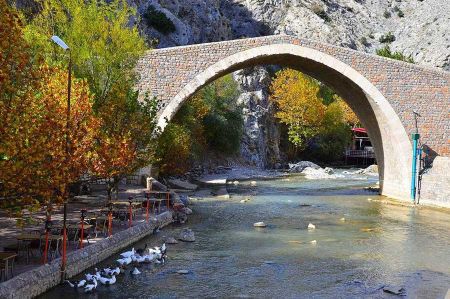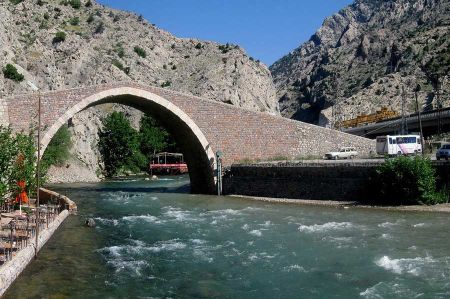Pozantı on ancient Roman Via Tauri
- Written by Portal Editor
We are on the way from Sanliurfa in the direction of Konya when we have to leave the highway D 21 coming from the direction of Adana at Pozanti in order to follow the course of the road 750 in the direction of Nigde / Karapinar.
To the right of the road you have a wonderful view of the 2,424 meter high Akdag and to the left you can see the massive heights of Mededsiz Tepe with a height of at least 3,524 meters.
The town of Pozanti, which belongs to the province of Adana, is nestled between these mountains. With this view in mind and excited to get to know something new again, we make a stopover with a short tour of the city.
The millennia-long leaching process of the Cakit river is probably primarily responsible for the resulting pass through the Taurus at this point, which was already used by the Romans and further expanded through the creation of the Roman road "Via Tauri", as in the meantime by numerous finds from Roman milestones could be proven. As is common for Roman settlements, a city was also laid out, which in ancient times was called Podandus or Podando, as is known from records.
Division of Cappadocia by the Emperor Valence

Only once in history did Podandus become so well known that there are numerous records in historiography: With the division of Cappadocia by the Emperor Valence in 372 into a northern and a southern half, Podandus became the capital of Cappadocia Secunda in the south, while Caesareia remained capital of Cappadocia Prima in the north. The historian Basilios of Caesarea had spoken very contemptuously in his notes about Podandus as a hole in the Taurus and compared it to a pit of Oedas of the Spartans, from which poisonous fumes and smoke rise. He just didn't like the city.
Pozantı - From the Arabs El Bedendum
This glorious time did not last long, however, because shortly afterwards Podandus was replaced by Tyana. The castles of Anahşa date from Byzantine times and were later called Butrentum by the crusaders who passed through. Called El Bedendum by the Arabs, the name of the city changed several times over the course of history until it became the Turkish name Bozanti or today Pozanti. A Slavic garrison, called Hisn Assakaliba by the Arabs, is just one more intermediate settlement in the city's eventful history.
We looked in vain for markings and crosses on the rocks of the castle complexes, which had been engraved into the stones by the soldiers of the first crusade, at least according to the legend. Today Pozanti is actually only known because of the Şekerpınar spring and is therefore hardly developed for tourism. We end our tour in a small tea garden by the river and discover that the town is worth seeing just because of the surrounding heights of the impressive Taurus Mountains.
Please also read:
The Walmendinger Horn - hiking tour and alpine flowers
Herakleia Lynkestis - a day trip to Bitola
